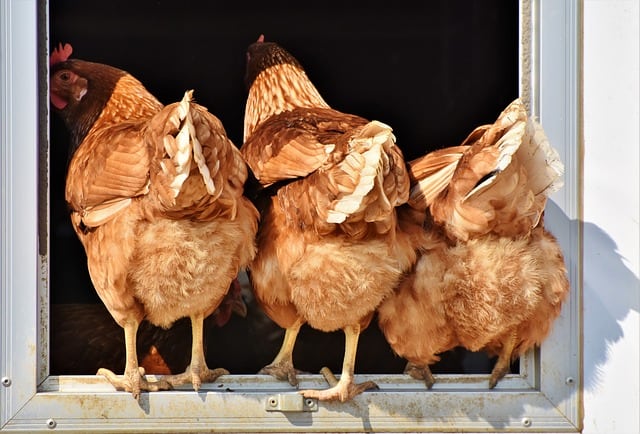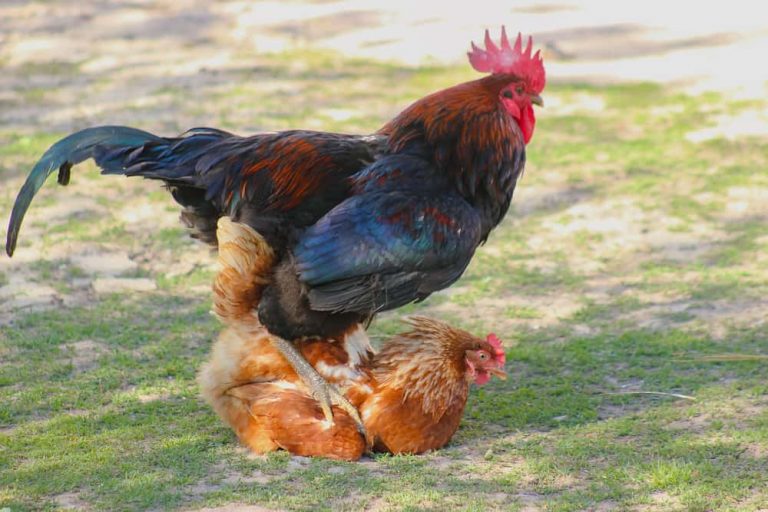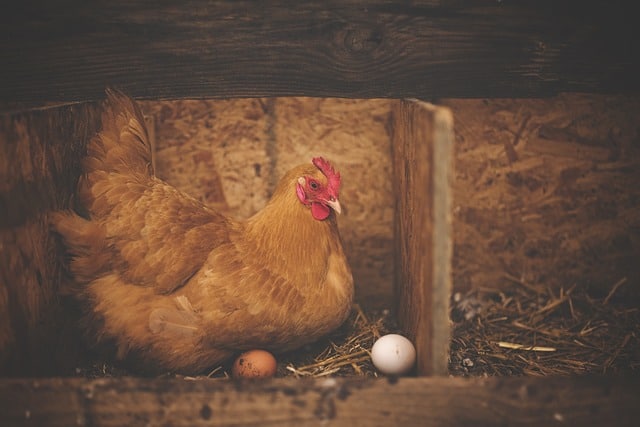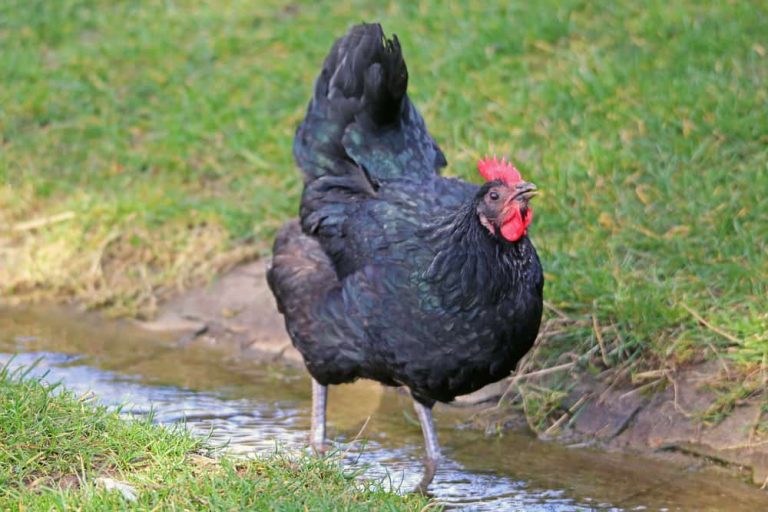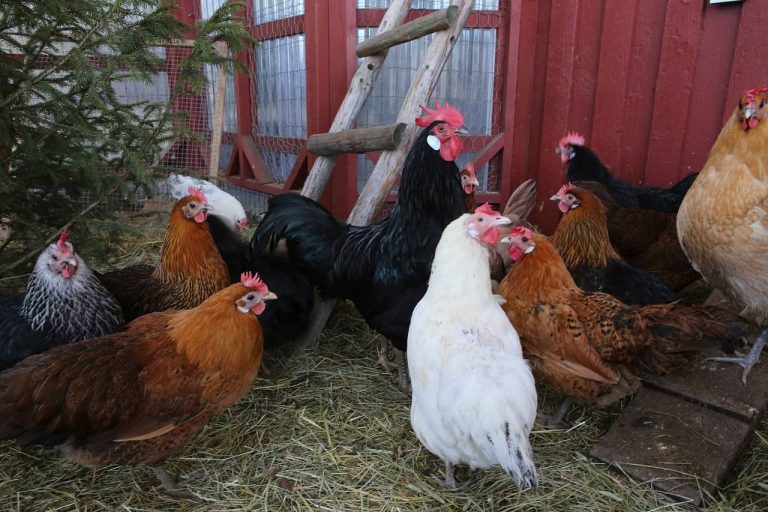Besides being great pets and providing healthy white meat, many backyard chicken farmers raise chickens for their eggs. The most common question I come across on this topic is, “How many chickens do I need to get a dozen eggs per week?”
I intend to provide a comprehensive answer to this question in this post. It is important to note from the outset that there is no definitive answer. Therefore, it’s not about giving you a specific number of chickens. Several factors influence the laying habits of the birds.
We will examine these factors together to help you understand what you can do to increase the productivity of your chickens. Before we proceed, it is important to realize that some hens may skip a day of laying while others may lay eggs daily.
In typical cases, you can expect to get a dozen eggs per week from 3 to 5 healthy laying hens. However, depending on various factors we will discuss later, you may need to have more hens to achieve your desired number of eggs. Let’s continue.
Contents
Factors Determining the Egg-Laying Capacity of Hens
Several factors can affect how well a hen lays eggs. Here are some important factors:
1. Age of the Hen
Hens usually begin laying eggs at around 5-6 months of age and reach peak production at approximately 1-2 years old. As hens get older, their egg production tends to decline, especially beyond their prime laying years.
2. The Breed of the Chicken
Different breeds of chickens have varying egg-laying capabilities. Some breeds are specifically bred for high egg production, while others prioritize other qualities such as meat production or ornamental features. Popular high-producing egg breeds include Leghorns, Rhode Island Reds, and Sussex.
3. The Diet of the Laying Hens
A hen’s diet plays a crucial role in its egg-laying capacity. A balanced diet rich in essential nutrients, including proteins, carbohydrates, fats, vitamins, and minerals, is vital for optimal egg production. A deficiency in key nutrients can result in decreased egg output or poor-quality eggs.
4. Lighting Conditions
Hens require a specific amount of light each day to maintain their egg-laying cycle. Adequate lighting, typically provided for around 14–16 hours per day, stimulates their reproductive systems and encourages consistent egg production. Natural daylight and artificial lighting can be used to achieve the desired lighting conditions.
5. Stress and environment
Hens are sensitive to stress, and a calm and comfortable environment is essential for optimal egg production. Factors such as overcrowding, extreme temperatures, predators, noise, and sudden changes in their surroundings can stress hens and negatively impact their egg-laying performance.
6. Health and disease
Maintaining good hen health is crucial for egg production. Diseases, parasites, infections, and nutritional deficiencies can hinder a hen’s ability to lay eggs. Regular veterinary care, vaccinations, parasite control, and a clean environment are important to prevent and manage health issues.
7. Genetics
The genetics of a hen play a significant role in determining its egg-laying ability. Selective breeding programs have been used to develop strains of chickens with improved productivity, including higher egg production.
8. Broodiness of the Hens
Broodiness is a natural instinct in hens to sit on and hatch eggs. Broody hens stop laying eggs during this period. Some breeds are more prone to broodiness than others. However, broodiness can be managed through various methods to encourage consistent egg production.
By paying attention to these factors and providing proper care, nutrition, and environment, poultry keepers can help maximize the egg-laying performance of their hens.
Egg-laying Cycle of Hens
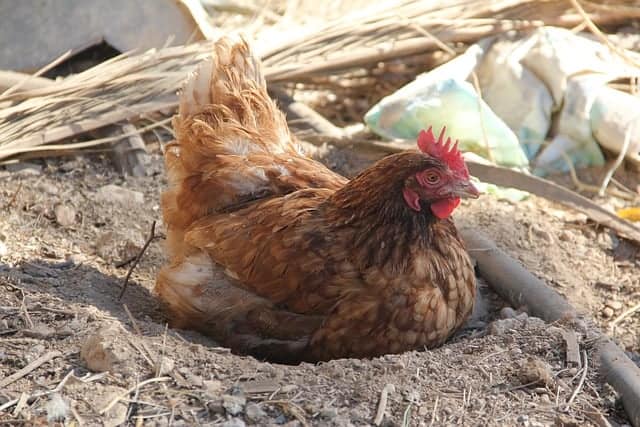
Before revealing how you can boost the productivity of your hens, it is important to understand the egg-laying cycle. It will help you know your hens better and make chicken farming an enjoyable and rewarding venture.
The laying cycle refers to the process by which a hen produces and lays eggs. It typically consists of several stages:
Stage 1: The Pullet Stage
This is the period when a young hen reaches sexual maturity, usually around 5–6 months of age. During this stage, the hen’s reproductive system develops, and she begins to produce eggs. However, egg production is not yet consistent or at peak levels.
Stage 2: Point of Lay
This stage occurs when the pullet reaches maturity and starts producing eggs regularly. The age at which a hen reaches the point of laying varies depending on the breed and individual factors. It usually occurs between 5 and 6 months of age for most commercial egg-laying breeds.
Stage 3: Peak Production
After reaching the point of laying, hens typically experience a period of peak egg production. This stage usually occurs when the hen is around 1–2 years old, depending on the breed. During this period, the hen produces the highest number of eggs per week.
Stage 4: Decline in Production
As hens age beyond their peak production years, their egg-laying capacity gradually decreases. The decline in egg production is a natural part of the aging process and can vary between individual hens. Factors such as genetics, nutrition, and overall health can influence the rate of decline.
Stage 5: Broodiness
Broodiness is a behavior exhibited by some hens during which they become inclined to incubate eggs and hatch chicks. When a hen becomes broody, she stops laying eggs and focuses on nesting and incubating. Broodiness is more common in certain breeds and can interrupt the regular laying cycle.
Stage 6: Molting
Molting is the process of shedding old feathers and regrowing new ones. It typically occurs annually, usually in the late summer or early fall. During molt, hens temporarily cease egg production as their bodies redirect energy and resources towards feather regrowth. Once the molt is complete, egg production usually resumes.
It’s important to note that the duration of each stage can vary depending on factors such as breed, environmental conditions, management practices, and individual hen health. By understanding the laying cycle, poultry keepers can better manage their flock and optimize egg production.
Making Future Plans and Boosting Hen Production
It can be disheartening to hear that some hens do not lay eggs daily and that there are many factors that can actually decrease egg production. Nevertheless, you can still mitigate these factors when determining how many hens you will need for dependable egg production.
Here are ways to go about it:
1. Renew Your Flock
You should recall from our earlier discussion that the age of hens determines their productivity. Younger chickens are more productive than older ones. Thus, if you want reliable egg production for years, you will need to plan on refreshing your flock every two years.
2. Optimize Nutrition
Provide a balanced and nutritious diet for your chickens. A high-quality layer feed that contains the right balance of protein, carbohydrates, fats, vitamins, and minerals is essential. You can also supplement their diet with calcium-rich sources like oyster shells to support eggshell production.
3. Provide clean water.
Ensure that your chickens have access to clean and fresh water at all times. Dehydration can negatively affect egg production, so make sure water is readily available. Contaminated water is equally dangerous, as it may also predispose the hens to waterborne diseases, further diminishing their productivity.
The water must also have the optimum temperature to be palatable to the birds; otherwise, they will just look at it and never drink it. For instance, chickens will not drink cold water, regardless of their hydration status. This will predispose them to dehydration.
4. Proper lighting conditions
Maintain proper lighting conditions to stimulate egg production. Provide around 14–16 hours of light per day to mimic the natural day length during the peak laying season. This can be achieved through a combination of natural daylight and artificial lighting.
5. Manage Stress
Minimize stress factors in the environment. Provide adequate space for the chickens, maintain proper ventilation, and minimize exposure to predators, excessive noise, and extreme temperatures. A calm and comfortable environment helps promote healthy egg production.
6. Nesting Boxes
Hens, just like other birds, love soft, private, and comfortable nests to lay eggs and incubate. If you intend to keep hens only for their eggs, you might be tempted to think they can lay eggs anywhere. Well, they will not.
This is why you must provide clean and comfortable nesting boxes where hens can lay their eggs. Ensure that the nesting boxes are in a quiet and secluded area to promote a sense of security for the hens. You will see the results.
7. Monitor Health
Health is the single most important factor that determines the productivity of hens as well as all other animals. Regularly monitor the health of your chickens and promptly address any signs of illness or disease.
Ensure they are vaccinated and implement a proper parasite control program. Luckily, there are vaccines for almost, if not all, poultry diseases in the world. You have to make sure the chicken is vaccinated at the right age. Healthy chickens are more likely to lay eggs consistently.
8. Genetic Selection
Choose chicken breeds that are known for their high egg-laying capacity. Breeds like Leghorns, Rhode Island Reds, and Sussex are popular choices for commercial egg production due to their superior egg-laying abilities.
9. Supplemental Lighting
In certain cases, additional artificial lighting can be used to extend the daylight hours and promote longer laying periods. It is a floppy balance here, as too much lighting can be stressful for the chicken. Therefore, you might want to consult with an expert or veterinarian for guidance on the appropriate lighting regimen.
10. Manage Broodiness
When broodiness sets in, chickens will stop laying. This is a natural process, but it is undesirable if you raise chickens for eggs. If broodiness becomes a problem and hens stop laying eggs, take steps to manage it. There are several methods to ensure you stop the chicken from going broody and laying eggs. They are discussed below.
How to Manage Broodiness
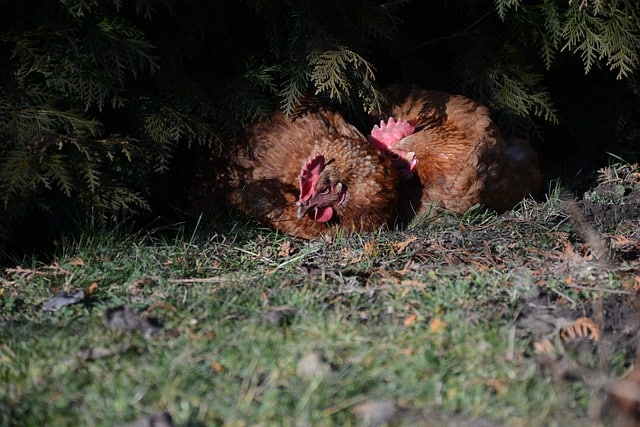
Managing broodiness in chickens involves various strategies to discourage the behavior and encourage consistent egg production. Here are some methods you can use:
- Collect eggs frequently.
Broody hens have a strong instinct to incubate eggs. By collecting eggs frequently, you prevent the accumulation of a clutch of eggs in the nesting box. This reduces the stimulus for broodiness.
- Remove nesting material:
Broody hens often gather nesting material to create a nest and encourage incubation. Removing or reducing the nesting material in the nesting boxes can help discourage broodiness.
- Disturb the Nesting Area:
Gently disturb the nesting area where the broody hen spends most of her time. You can do this by lifting her off the nest or rearranging the nesting material. Disrupting the nesting routine can help break the broody behavior.
- Cold Water Treatment:
This method involves briefly dunking the broody hen’s lower body in cold water for a few seconds. The sudden temperature change can interrupt the broody behavior. Ensure the water is not too cold, as it may harm the hen.
- Increase light exposure:
Broodiness can be influenced by the length of the daylight hours. Increase the amount of light exposure in the henhouse by adding additional artificial lighting. This disrupts the natural hormonal cycle associated with broodiness and encourages egg production.
- Separate the Broody Hen:
If the broody behavior persists, consider separating the broody hen from the nesting area and other hens. Provide her with a separate space, such as a wire-bottomed cage or a broody pen, where she cannot nest or incubate eggs. This helps break the broody cycle.
- Offer Distractions:
Provide environmental enrichment and distractions to keep the broody hen engaged and occupied. Scatter treats or provide toys or scratch areas to divert her attention from nesting and brooding.
- Wait it out:
Sometimes, broodiness naturally subsides over time. If the broody behavior is not causing any issues, you can choose to let it run its course. However, keep an eye on the hen’s overall health and well-being during this period.
Keep in mind that not all hens will respond to the same methods, and the effectiveness of these strategies may vary. It’s important to be patient and persistent when managing broodiness in chickens.
Points to Take Home and Conclusion
To have a dozen eggs per week, you typically need around three to four laying hens. The number of chickens required depends on several factors, including their breed, age, health, and productivity.
On average, a healthy laying hen will lay about 4 to 6 eggs per week during its peak production period. However, keep in mind that egg production can vary based on individual chickens and environmental factors.
If you aim for a dozen eggs per week, having three to four chickens should provide a sufficient number of eggs. This allows for some variability in egg production and ensures you have an ample supply.
Additionally, it’s essential to consider the space, resources, and care required to keep chickens. Ensure you have enough coop space, appropriate feeding arrangements, and the ability to meet their health and welfare needs.
Remember that factors such as the breed, age, and overall health of your chickens can influence their egg production. It’s a good idea to research and select breeds known for their consistent egg-laying abilities if your goal is to maximize egg production.
Consulting with local poultry experts or experienced chicken keepers in your area can provide valuable insights specific to your region and conditions.

